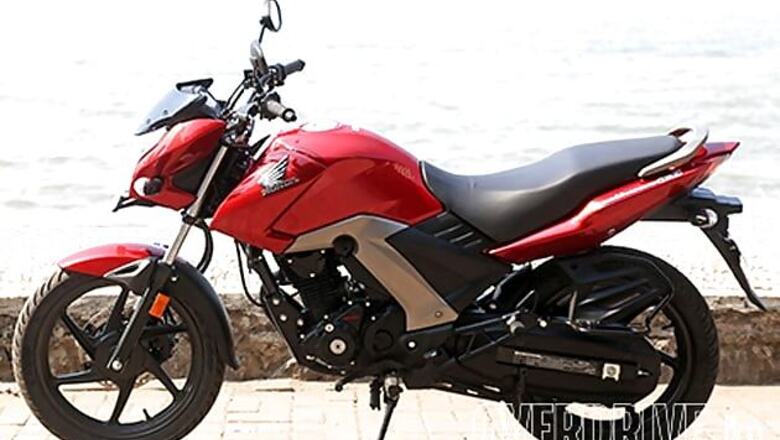
views
Honda recently launched its new CB Unicorn 160. This story is about the technical side of the new Honda CB Unicorn 160. Honda say it is an all-new motorcycle and here's what's under its skin.
Chassis
The old Honda Unicorn remains on sale. That motorcycle weights 143kg. The new one weights 135kg (add one more kilogram for the CBS version. These are all kerb weights). And most of the work on chassis for the 160 is towards losing weight rather than any significant alteration in dynamic performance. Which is perhaps the right approach given that the (old) Unicorn always had neutral, stable, confident handling and good ride quality but as the 150s have lost weight in time, it stands out as one of the heaviest machines in the class.
So the rake, trail and steering offset figures remain more or less the same. Honda has made minor changes in wheelbase (down 4mm), ground clearance (down 12mm) and overall dimensions. But they confirm that the core chassis balance has not been altered. What has happened is a lot of CFD and FEM work to understand the stresses on the chassis to eliminate superfluous metal and gain weight savings.
Engine
The Honda Unicorn 160 engine is all-new though it is based firmly on the old engine. What that means is that Honda R&D took the old engine as a basis and then reworked it part by part to arrive at the new engine. The biggest change, of course, is the change in displacement so let us start there.
Displacement
The old Unicorn engine displaced 149cc and the new one hits a class high of 163cc. This has been achieved with the same bore but a significantly longer stroke. In the process, the compression ratio also rose. In effect, longer stroke engines find it easy to make lots of torque at low and middle revs. Exactly the kind of power spread the CB Unicorn likes. The higher compression ratio allows the engine to run more efficiently and extract more economy as well as performance from fuel. Higher compression ratios are associated with greater sensitivity to the quality of the fuel, but at 10:1, the new 160 engine isn't actually that highly compressed to develop that kind of sensitivity.
Temperature control
Since the Unicorn engine is air-cooled, thermal control is a matter of designing the engine right. Liquid-cooled engines have artificial, controllable and more efficient thermal stabilisation. This means they, for instance, don't require finned cylinders and other tools of the air-cooled trade.
In the case of the Unicorn 160, Honda employ what they call a 'Spiny Sleeve'. What this means is that the outer surface of the cylinder liner is treated to create a granular surface where it meets the engine block's metal. The surface treatment increases the surface area of the cylinder liner which should show a demonstrable gain in the transfer of waste heat outwards to the cylinder fins where air can carry away this heat.
Changes in the engine head
Honda have not altered the sizes of the valves on the 160 but they have made changes. I don't have the numbers as I write this but both the valves show increased lift and a slight drop in valve overlap (the slice of time when both the intake and exhaust valves are open). The timing of the valves has not changed significantly but the camshaft has new profiles to allow and control the new lift profiles.
What that means is that the Unicorn engine should be able to draw in and clear out more gases on the intake and exhaust cycles respectively. A drop in overlap should mean cleaner performance right off the bottom.
The bottom of the engine
Honda has, as usual, been targetting friction in the search for greater efficiency. This time needle bearings are being brought in. There's also been a slight reduction in flywheel weight which should manifest as an engine which picks up revs a little bit quicker.
Fuelling
The only change in the fuelling system is that the bore of the carburettor is slightly larger. This is consistent with higher lift valves and should give the engine the ability to breathe deeply. In our tests, this should mean that the Unicorn 160 is better at running near its redline than the old Unicorn which we know had great bottom and mid-range but a relatively weak top-end.













Comments
0 comment